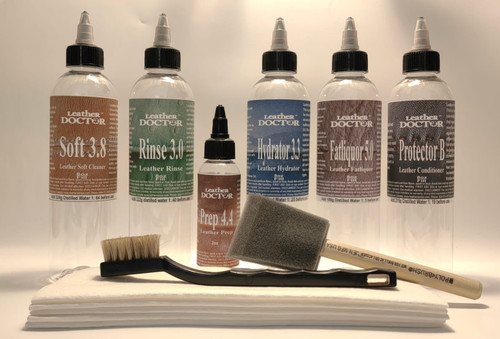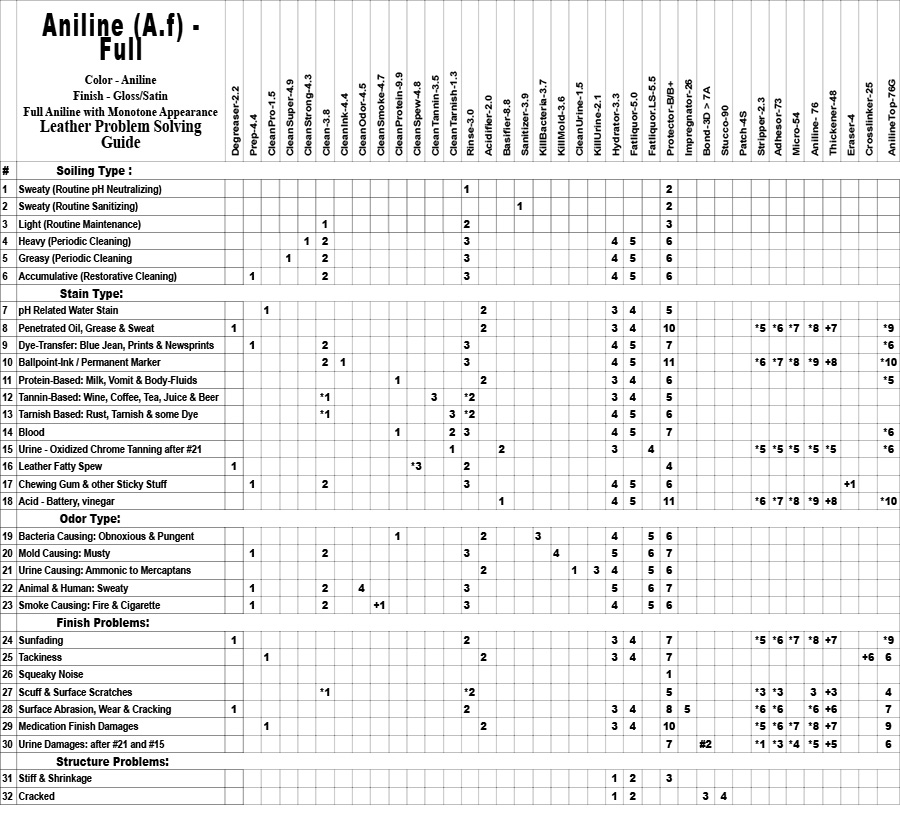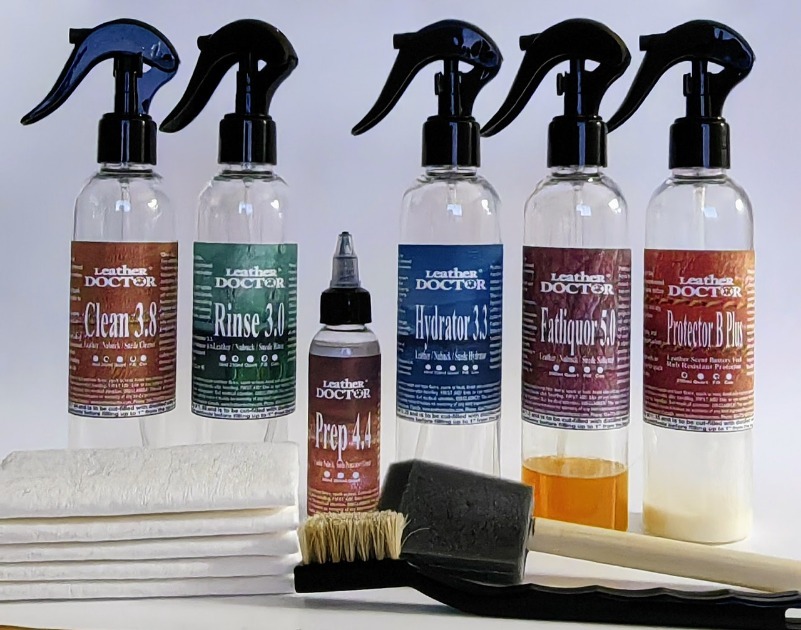-

-

Leather Hydrator and Softener Kit HS3
$69.95 - $73.95 -

Aniline Leather Gloss Topcoat Refinishing Kit A6.tc
$141.95 - $150.95 -

-

Leather Repair Kit A7.r
$35.95 -

Veg-Tan Leather Water Stain Remover Kit L3.ws
$115.95 - $119.95 -

-

-

Leather Getting Sticky Restoration Kit L7
$89.95 - $93.95 -

-
-


Aniline Leather Care Kit
Leather Doctor Aniline Leather Care Kit comes in a variety of leather-safe system kits to handle common problems derived from greasy, sweaty to accumulative soiling; water stains, body oil, grease, and sweat stain, dye transfer stain, ballpoint-ink stain, protein-based stains, tannin-based stain, tarnish-based stain, blood stain, urine stain, chewing gum, and fatty spew stain; bacteria odor, mold odor, urine odor, sweaty odor, and smoke odor; sun-fading, tackiness, squeaky noises, scuff, scratches, and abrasion.
Aniline leather's common problem is the sun fading from direct sunlight and UV lighting.
Activating the dormant dyestuff within the leather with hydration refreshes the color to the surface, just like reactivating tea leaves with hot water, in this process we use Hydrator-3.3.
When the leather structure is replenished with fatliquor, (fat and oil) it further intensifies the color saturation for a good inspection before considering a color refinishing.
Aniline leather's periodic hydrating and reconditioning help to keep leather perpetually supple, preventing the leather from dryness that leads to stiffness and cracking.
Aniline leather when new is soft and natural and comes mainly from the hide of a cow, large enough for making upholstery. They are chemically converted into leather through tanning, dyeing, and fatliquoring sequences. The leather becomes an amphoteric protein material and is pH sensitive, thus cleaning and restoring with leather-safe products that have a pH value between 3 to 5 is highly recommended or otherwise, leather denatures with the common side effects are manifested as tackiness, dye bleeding, and loss its suppleness, becomes stiff and crack.

Aniline Leather Problem Solving Guide
Aniline Leather Problem Solving Matrix is a reference guide during cleaning and restoration. Identify the problem from the left column, tally with the top row product recommended and the numbers in the sequence of steps. When the leather has compound issues, combine the soiling, stain, and odor types as the first cleaning phase-1, and then the leather conditions with Hydrator-3.3 and Fatliquor-5.0 as the second phase-2. The structural problem is as third phase-3, Finishing as fourth phase-4, and protection of the finishes as Fifth phase-5. Any questions you may have will be answered from our help and support forum: http://www.leathercleaningrestorationforum.com/forum/forumdisplay.php?59-Upholstery-Aniline-Leathers


